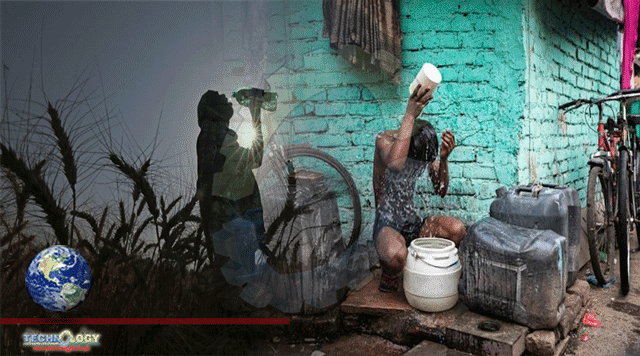Wet-bulb temperatures measures the combination of heat and humidity, which can hamper the human body’s ability to cool itself if at too high a level.

Wet-bulb temperatures measures the combination of heat and humidity, which can hamper the human body’s ability to cool itself if at too high a level.
Parts of India and Pakistan have been sweltering for weeks under a record-breaking heat wave, exposing more than a billion people to dangerously hot conditions with little relief in sight.
While temperatures in the region cooled slightly this week, blistering heat is expected to return in the coming days and spread east, where rising “wet-bulb temperatures” — an esoteric measurement that was little known outside meteorology circles until now — could threaten the ability for humans to survive, according to experts.
It’s the type of concern that is becoming more urgent as climate change makes extreme heat events both more frequent and more severe, said Friederike Otto, a climate scientist at Imperial College London.
“If we do one thing to adapt, it really needs to be for heat, because that is where we see the strongest changes everywhere in the world,” she said.
As the intensity of heat waves increases as a result of global warming, it raises the risk that what’s known as wet-bulb temperatures will also go up, pushing some heat events into “unsurvivable” territory, experts say.
Wet-bulb temperature measures the combination of heat and humidity, which can hamper the human body’s ability to cool itself down if at too high a level.
Humans, like most mammals, cool themselves through sweating. Body heat is used to convert sweat into water vapor, and as that evaporation process occurs, the body cools.
“It’s a very effective means of cooling, but it’s crucial that the sweat can actually evaporate,” said Tapio Schneider, a professor of environmental science and engineering at the California Institute of Technology.
When the wet-bulb temperature, or the combination of heat and humidity, exceeds the temperature of the human body — around 97 degrees Fahrenheit or 36 degrees Celsius — sweat cannot evaporate and humans can no longer cool themselves down.
“It’s really a hard limit for survivability,” Schneider said. “You can die just by sitting there. You don’t need to move or do anything else. There’s simply no way to cool and you overheat.”
In areas with dry heat, the wet-bulb temperature threshold for human safety will be higher. But in more humid places, temperature and humidity will create a potentially lethal mix at a lower point.
The name itself comes from how meteorologists sometimes calculate wet-bulb temperatures, which involves wrapping a wet cloth around a thermometer and measuring how much the temperature cools as a result of evaporation.
Climate studies have found that as global temperatures creep up, warmer air will be able to hold more moisture. That, in turn, will increase humidity and cause wet-bulb temperatures to rise.
A study published in May 2020 in the journal Science Advances found that heat and humidity in certain parts of the world are already testing the limits of human survivability. The research found that parts of South Asia, including India and Pakistan, coastal and southwestern North America and areas around the Persian Gulf have experienced conditions “nearing or beyond prolonged human physiological tolerance.”
Over the past month, temperatures in Pakistan and across northwest and central India soared above 100 degrees Fahrenheit for days on end, with the region posting its highest average temperatures on record for the month of April. With the heat wave expected to expand into more humid, coastal regions, the risk of hitting critical wet-bulb temperature thresholds will increase, Otto said.
The Pakistan Meteorological Department is forecasting severe heat wave conditions for the coming week, with officials there advising people to avoid unnecessary exposure to direct sunlight.
Otto said that without crucial interventions to reduce greenhouse gas emissions and slow the pace of climate change, oppressive and dangerous heat waves will persist.
“We have seen everywhere across the world that heat records are being broken every year, and this is exactly what we expect in a warming climate,” she said. “Climate change has been a real game-changer when it comes to heat waves.”
This news was originally published by NBC News.